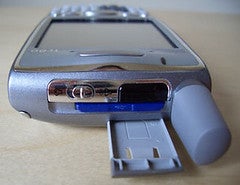
Image by cocoate.com via Flickr
Intel’s newly announced plan to buy chip maker Infineon’s wireless business unit for $1.4 billion gives Intel another shot at the highly coveted mobile business that includes smartphones, embedded devices and laptops.
And for Intel it’s familiar territory.
That’s because Intel previously tried to win in this space with its XScale processors designed for smartphone handsets. Intel gained XScale through another acquisition – Digital Equipment Corp.’s semiconductor operations back in 1997. The XScale ARM-based processor went on to become the brains inside several smartphones, including the Palm Treo and Motorola Q.
But the aftermath of the dot-com crash and a series of setbacks versus smaller rival AMD, which had been gaining momentum, left Intel at a crossroads when it came to the mobile business. Industry observers wondered if Intel had lost its way, betting on technologies beyond its core Intel architecture. The pressure was on.
Intel initiated an “efficiency review” that led to the layoff of thousands of employees and plans to sell its communications business. In June 2006, Intel said it would sell its XScale business to Marvell for $600 million.
But what a difference a few years make.
Now it’s widely acknowledged that smartphones are the device of choice for users, growing far more rapidly than PCs. And users are making more of the decisions these days on client devices as they use their own technology for work instead of company-issued standard hardware. Smartphones, tablets and other handheld devices, as well as embedded devices, are thought to be the way forward for the technology hardware industry.
Today Intel is buying Infineon’s wireless business unit, which includes ARM-based processors, for $1.4 billion. Intel also recently announced plans to acquire security software vendor McAfee and is expected to take security down into the silicon and make it available on wireless devices such as smartphones and tablets.
This is where Intel wanted to go a few years ago. But now the timing is right.
What does that mean for IT solution providers? If you haven’t already, the time is now to jump in with a mobility practice to help your customer companies make the transitions ahead and take advantage of top mobility trends. More consumer devices will be coming to the workplace. Companies will be looking to integrate those devices with corporate applications and secure it. E-mail is the obvious one for initial integration. Salesforce.com has told Channel Insider that it has seen plenty of applications created for smartphones such as the iPhone. What applications are your customers telling you they want on their phones, and can you deliver them?
